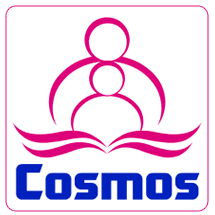Role of AV Aids in Enhancing Students Academic Achievement at Secondary Level in Azad Jammu and Kashmir
DOI:
https://doi.org/10.5281/ijete.v2i1.38Keywords:
Audio-visual aids, Secondary school, Academic achievementAbstract
This study was conducted to examine the role of AV aids in enhancing academic achievement at secondary level in City Kotli AJ&K. The current study was descriptive in nature and survey method was used for the data collection. The population of the study consisted of 304 secondary school teachers and 170 teachers selected using simple random sampling technique. The researcher personally visited the secondary schools of City Kotli and collected the data. The researcher applied frequency, percentage, simple mean and one-way ANOVA for the analysis of data. It was found that there were significant differences between the role of AV aids and student’s academic achievement with respect to teacher’s qualifications and experiences. It is concluded that SSTs use educational videos to interact with digital or visual content. It is recommended that SSTs may use projectors, whiteboards, educational videos and multimedia presentations to present the visual content properly in the classroom.
Downloads
References
Adalikwu, S. A., & Iorkpilgh, I. T. (2013).The influence of instructional materials on academic performance of senior secondary school students in chemistry in Cross River State. Global Journal of Educational Research, 12(1), 39-46.
Afriza, D. A., & Nasution, N. E. A. (2022). Comparison of The Learning Outcomes of Junior High School Students Utilizing Audio-Visual and Chart Learning Media to Study Ecosystem. META: Journal of Science and Technological Education, 1(1), 46-57.
Al-Yaari, S. A. S. (2013). Using audio-visual aids and computer-assisted language instruction (CALI) to overcome learning difficulties of speaking in students of special needs. Journal for the Study of English Linguistics, 1(2), 231-255.
Ashaver, D., & Igyuve, S. M. (2013). The use of audio-visual materials in the teaching and learning processes in colleges of education in Benue State-Nigeria. IOSR Journal of Research & Method in Education, 1(6), 44-55.
Bagila, S., Kok, A., Zhumabaeva, A., Suleimenova, Z., Riskulbekova, A., & Uaidullakyzy, E. (2019). Teaching primary school pupils through audio-visual means. International Journal of Emerging Technologies in Learning (iJET), 14(22), 122-140.
Bienkowski, M., Feng, M., & Means, B. (2012). Enhancing Teaching and Learning through Educational Data Mining and Learning Analytics: An Issue Brief. Office of Educational Technology, US Department of Education.
Bridges, D., Pitiot, A., MacAskill, M. R., & Peirce, J. W. (2020). The timing mega-study: Comparing a range of experiment generators, both lab-based and online. PeerJ, 8, e9414
Chien, C. H. (2020). The Effects of Multimedia Learning on Academic Achievement of Technical Education Students in Taiwan. Journal of Computers in Education, 7(3), 379-396.
Chijioke, O. P., & Ekwueme, O. (2022). Effect of Audio-Visual Aids on Students’ Academic Achievement in Mechanical Engineering Craft Practice in Technical Colleges in Rivers State. East Asian Journal of Multidisciplinary Research, 1(11), 2769-2778.
Dar, M. A., & Kudare, e. a. (2022). Role Of Projected And Non-Projected Teaching Aids In Teaching Learning Process. Journal of Positive School Psychology, 6(10), 1725-1743.
Darmayanti, R., Baiduri, B., & Sugianto, R. (2022). Learning Application Derivative Algebraic Functions: Ethnomathematical Studies and Digital Creator Books. Jurnal Cendekia: Jurnal Pendidikan Matematika, 6(2), 2212-2227.
De Sousa, L., Richter, B., & Nel, C. (2017). The effect of multimedia use on the teaching and learning of Social Sciences at tertiary level: a case study. Yesterday and Today, (17), 1-22.
Gersmehl, P. (2014). Teaching geography. Guilford Publications.
Harahap, M. S., Nunzairina, N., Isnawati, I., & Subari, Z. (2022). The Effectiveness Of Using Audio Visual Aids To Improve The Listening Skill Of Second Year Secondary Students At The Institute Of Islamic Education Al-Hadith Bagan Batu Riau. Paper presented at the Proceeding of International Conference on Islamic Education (ICIED).
Hennessy, S. (2011). The role of digital artefacts on the interactive whiteboard in supporting classroom dialogue. Journal of computer assisted learning, 27(6), 463-489.
Herianto, Wilujeng, I., & Lestari, D. P. (2022). Effect of interactive multimedia e-books on lower secondary school students’ curiosity in a Science course. Education and Information Technologies, 27(7), 9619-9639.
Idris, A. T., Shamsuddin, I. M., Arome, A. T., & Aminu, I. (2018). Use of audio-visual materials in teaching and learning of classification of living things among secondary school students in Sabon Gari LGA of Kaduna State. Plant, 6(2), 34.
Kathirvel, K., & Hashim, H. (2020). The use of audio-visual materials as strategies to enhance speaking skills among ESL young learners. Creative Education, 11(12), 2599.
Kesici, Ş., & Sahin, I. (2021). The Effect of Multimedia Presentations on Academic Achievement and Attitude towards the Course. Journal of Computer Assisted Learning, 37(2), 340-350.
Lai, Y. S., Tsai, H. H., & Yu, P. T. (2011). Screen-capturing system with two-layer display for PowerPoint presentation to enhance classroom education. Journal of Educational Technology & Society, 14(3), 69-81.
Lazarevic, B., & Scepanovic, D. (2010). Unrevealed Potential In Delivering Distance Courses: The Instructional Value Of Audio. eLearning & Software for Education.
Loughran, J. (2013). Developing a pedagogy of teacher education: Understanding teaching & learning about teaching. Routledge.
Manca, S., & Ranieri, M. (2016). Facebook and the others. Potentials and obstacles of social media for teaching in higher education. Computers & Education, 95, 216-230.
Marcus, A. S., Metzger, S. A., Paxton, R. J., & Stoddard, J. D. (2018). Teaching history with film:Strategies for secondary social studies. Taylor & Francis.
Mathew, N. G., & Alidmat, A. O. H. (2013). A study on the usefulness of audio-visual aids in EFL classroom: Implications for effective instruction. International Journal of Higher Education, 2(2), 8692.
Nadziroh, A. (2010). The use of flashcard to improve vocabulary mastery. Graduate Thesis, State Institute of Islamic Studies Salatiga.
Namaziandost, E., Nasri, M., & Akbari, S. (2019). The impact of teaching listening comprehension by audio and video aids on the intermediate efl learners listening proficiencies. Language, Literature and Culture, 2(3), 121-128.
Ordu, U. B. A. (2021). The Role of Teaching and Learning Aids/Methods in a Changing World. Bulgarian Comparative Education Society.
Orlich, D. C., Harder, R. J., Callahan, R. C., Trevisan, M. S. T., & Brown, A. H. (2010). Teaching strategies: A guide to effective instruction. Wadsworth, Cengage Learning.
Rasul, S., Bukhsh, Q., & Batool, S. (2011). A study to analyze the effectiveness of audio visual aids in teaching learning process at uvniversity level. Procedia-Social and Behavioral Sciences, 28, 78-81.
Renninger, K. A., & Hidi, S. (2015). The power of interest for motivation and engagement. Routledge.
Sadler, D. R. (2014). Beyond feedback: Developing student capability in complex appraisal. In Approaches to assessment that enhance learning in higher education (pp. 45-60). Routledge.
Sanusi, I. T., Oyelere, S. S., & Omidiora, J. O. (2022). Exploring teachers' preconceptions of teaching machine learning in high school: A preliminary insight from Africa. Computers and Education Open, 3,100072.
Schwartz, D. S. (2011). A foundation theory of evidence. Geo. LJ, 100, 95.
Shehada, M. S. M., & Amer, M. O. D. (2019). Perceptions of Palestinian students towards using audio visual aids in the English language classroom at the university level. المجلة الفلسطينية للتعليم المفتوح والتعلم الإلكتروني, 7(13).
Watkins, J. (2018). Composing Visual Music: visual music practice at the intersection of technology, audio-visual rhythms and human traces. Body, Space & Technology, 17(1), 51-75.
Wazeema, T. M. F., & Kareema, M. I. F. (2017). Implication of multimedia audio-visual aids in the English language classroom.
Yapıcı, İ. (2022). The Effect of Interactive Whiteboard Use on Academic Achievement: A Meta-Analysis. Educational Sciences: Theory & Practice, 22(1), 1-26.
Downloads
Published
How to Cite
Issue
Section
License
This is an Open Access article distributed under the term of the Creative Commons Attribution 4.0 International licenses permitting all use, distribution and reproduction in any medium provided the work is properly cited.

























